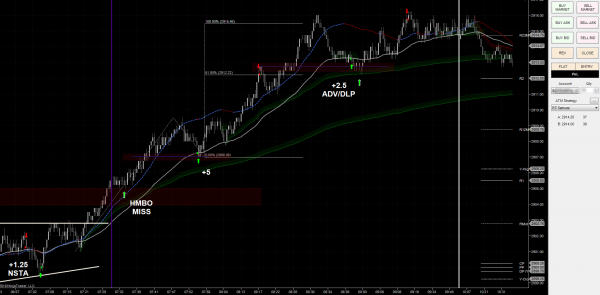Emini Day Trading Lessons: +6.5 Points – The Importance of Adaptability
I know I talk about it a lot in these trading journal posts but it's worth stressing again the importance of being adaptable as a day trader. In yesterday's post I discussed how having a bias and not adapting to new market information can really hold a trader back from finding opportunity and developing consistency but it also applies when it comes to enhancing profitability.
The Emini S&P 500 is constantly shifting from trends, ranges, consolidation, swings and everything in between so if you can't adapt you're not likely to achieve the kind of consistency and profitability you're looking for.
Don't Fight the Flow
For example, it's not unusual for me to see novice traders that I've worked with do essentially the exact opposite of what they should in terms of trade management when they first start out.
When the market is moving with little momentum or in a tight range they often enter trades hoping for the home run breakout move while leaving the stop wide open.
When the market is moving well and there's a strong trend they have an opposite reaction where they fear the move may be coming to an end and either look to take small profits or bring their stops in too tight, often resulting in a near break-even stop-out.
It doesn't make a lot of sense in hindsight but at the time these emotions of fear and greed are real and exert a significant influence on many inexperienced traders. It's vital to learn how to flip this behavior by giving strong price moves time and breathing room for continuation or by tightening things up and even taking smaller profits when the market momentum is limited.
This allows a trader to essentially trade within the "flow" of the market rather than fighting against it and ultimately leads to more consistency and profitability as a result.
Seeing the Big Picture
It's worth noting that this doesn't mean a trader is always expected to adapt perfectly and to take full advantage of every move. Sometimes you will look for a bigger profit in a trend and end up giving part of it back that you could have banked. Other times it might mean that you take a small profit in a tight range and and then the breakout move suddenly develops without you.
The important thing is to not let those single instances create an emotional response the next time you see that same trading setup develop. You need to think in terms of large samples of similar trades.
If you aimed for larger profit targets after a strong trending move on 50 or 100 similar trades, would you be more profitable overall? If you tightened up your stop a tick or two (or even took profit off the table) when the market was consolidating and you aren't getting the next leg of the move you're looking for, would your trade expectancy in those situations improve?
Those are the kind of questions a trader needs to continuously ask while regularly collecting data and insight from past trades, practice sessions and their own journal sessions. This requires a bit of hard work but not only will it give a trader full confidence in their trading edge but it will also provide them the ability to be adaptable as the market condition shifts.
It usually doesn't take a whole lot of number crunching to see how often we get in our own way when it comes to trade management and that it's often far, far easier to simply adapt and go with the flow of the market.
- Strike While The Iron is Hot - March 1, 2021
- The Path to Becoming a Full Time Trader - February 22, 2021
- Looking to 2021 and Beyond - January 20, 2021




